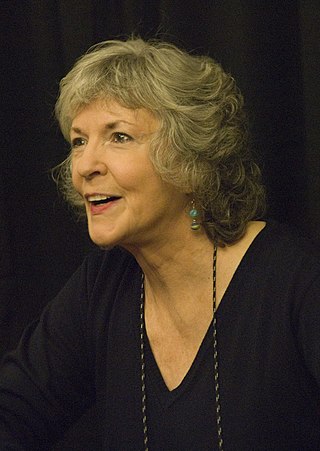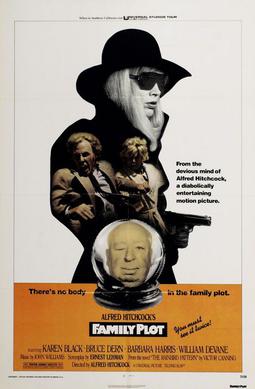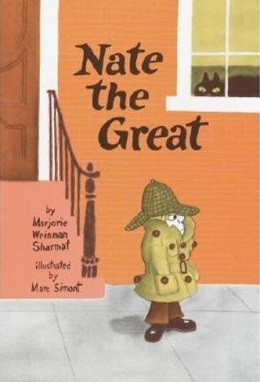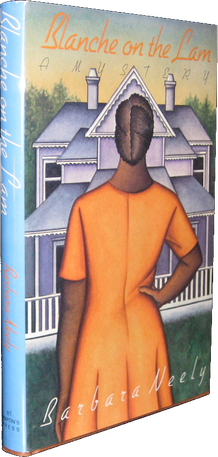
Jane Eyre is a novel by the English writer Charlotte Brontë. It was published under her pen name "Currer Bell" on 19 October 1847 by Smith, Elder & Co. of London. The first American edition was published the following year by Harper & Brothers of New York. Jane Eyre is a Bildungsroman which follows the experiences of its eponymous heroine, including her growth to adulthood and her love for Mr Rochester, the brooding master of Thornfield Hall.

Farnham's Freehold is a science fiction novel by American writer Robert A. Heinlein. A serialised version, edited by Frederik Pohl, appeared in Worlds of If magazine. The complete version was published in novel form by G.P. Putnam later in 1964.

Margery Louise Allingham was an English novelist from the "Golden Age of Detective Fiction", and considered one of its four "Queens of Crime", alongside Agatha Christie, Dorothy L. Sayers and Ngaio Marsh.

The Moonstone: A Romance by Wilkie Collins is an 1868 British epistolary novel. It is an early example of the modern detective novel, and established many of the ground rules of the modern genre. The story was serialised in Charles Dickens’s magazine All the Year Round. Collins adapted The Moonstone for the stage in 1877.

Sue Taylor Grafton was an American author of detective novels. She is best known as the author of the "alphabet series" featuring private investigator Kinsey Millhone in the fictional city of Santa Teresa, California. The daughter of detective novelist C. W. Grafton, she said the strongest influence on her crime novels was author Ross Macdonald. Before her success with this series, she wrote screenplays for television movies.
Margaret Ellis Millar was an American-Canadian mystery and suspense writer.

A mammy is a U.S. historical stereotype depicting black women who work in a white family and nurse the family's children. The fictionalized mammy character is often visualized as a fat, dark-skinned woman with a motherly personality. The origin of the mammy figure stereotype is rooted in the history of slavery in the United States, as black slave women were often tasked with domestic and childcare work in white American slaveholding households. The mammy caricature was used to create a narrative of black women being happy within slavery or within a role of servitude. The mammy stereotype associates black women with domestic roles and it has been argued that it, combined with segregation and discrimination, limited job opportunities for black women during the Jim Crow era, approximately 1877 to 1966.
Barbara Louise Mertz was an American author who wrote under her own name as well as under the pseudonyms Elizabeth Peters and Barbara Michaels. In 1952, she received a PhD in Egyptology from the University of Chicago. She was best known for her mystery and suspense novels, including the Amelia Peabody book series.

Family Plot is a 1976 American black comedy thriller film directed by Alfred Hitchcock in his final directing role. It was based on Victor Canning's 1972 novel The Rainbird Pattern, which Ernest Lehman adapted for the screen. The film stars Karen Black, Bruce Dern, Barbara Harris and William Devane; it was screened at the 1976 Cannes Film Festival, but was not entered into the main competition.

The Dain Curse is a novel by American writer Dashiell Hammett, published in 1929. Before its publication in book form, it was serialized in Black Mask magazine in 1928 and 1929.

The Agatha Awards, named for Agatha Christie, are literary awards for mystery and crime writers who write in the traditional mystery subgenre: "books typified by the works of Agatha Christie. .. loosely defined as mysteries that contain no explicit sex, excessive gore or gratuitous violence, and are not classified as 'hard-boiled.'" At an annual convention in Washington, D.C., the Agatha Awards are handed out by Malice Domestic Ltd, in six categories: Best Novel; Best First Mystery; Best Historical Novel; Best Short Story; Best Non-Fiction; Best Children's/Young Adult Mystery. Additionally, in some years the Poirot Award is presented to honor individuals other than writers who have made outstanding contributions to the mystery genre, but it is not an annual award.

The Mysteries of Udolpho, by Ann Radcliffe, appeared in four volumes on 8 May 1794 from G. G. and J. Robinson of London. Her fourth and most popular novel, The Mysteries of Udolpho tells of Emily St. Aubert, who suffers misadventures that include the death of her mother and father, supernatural terrors in a gloomy castle, and machinations of an Italian brigand. Often cited as the archetypal Gothic novel, The Mysteries of Udolpho appears prominently in Jane Austen's 1817 novel Northanger Abbey, where an impressionable young woman reader comes to see friends and acquaintances as Gothic villains and victims, with amusing results.
Evelyn Ward Everett-Green was an English novelist who started with improving, pious stories for children, moved on to historical fiction for older girls, and then turned to adult romantic fiction. She wrote about 350 books, more than 200 of them under her own name, and others using the pseudonyms H. F. E., Cecil Adair, E. Ward and Evelyn Dare.

Nate the Great is a series of 30 children's detective stories written by Marjorie Weinman Sharmat and featuring the boy detective Nate the Great. Sharmat and the illustrator Marc Simont inaugurated the series in 1972 with Nate the Great, a 60-page book published by Coward, McCann & Geoghegan. Simont illustrated the first twenty books, to 1998; the last ten were illustrated by Martha Weston, Jody Wheeler, or Olga and Aleksey Ivanov "in the style of Marc Simont". Some of the titles were jointly written with Sharmat's sister Rosalind Weinman, husband Mitchell Sharmat or sons Craig Sharmat and Andrew Sharmat. Regarding the series, Marjorie Sharmat has called her husband Mitchell "always my first editor, and it's been a very happy collaboration".
The gentleman detective, less commonly lady detective, is a type of fictional character. He has long been a staple of crime fiction, particularly in detective novels and short stories set in the United Kingdom in the Golden Age. The heroes of these adventures are typically both gentlemen by conduct and often also members of the British gentry. The literary heroes being in opposition to professional police force detectives from the working classes.

Emmeline, The Orphan of the Castle is the first novel written by English writer Charlotte Smith; it was published in 1788. A Cinderella story in which the heroine stands outside the traditional economic structures of English society and ends up wealthy and happy, the novel is a fantasy. At the same time, it criticises the traditional marriage arrangements of the 18th century, which allowed women little choice and prioritised the needs of the family. Smith's criticisms of marriage stemmed from her personal experience and several of the secondary characters are thinly veiled depictions of her family, a technique which both intrigued and repelled contemporary readers.
Barbara Ann Neely was an African-American novelist, short story writer and activist who wrote murder mysteries. Her first novel, Blanche on the Lam (1992), introduced the protagonist Blanche White, a middle-aged mother, domestic worker and amateur detective. The Mystery Writers of America named her their 2020 Grand Master winner.
Bouchercon is an annual convention of creators and devotees of mystery and detective fiction. It is named in honour of writer, reviewer, and editor Anthony Boucher; also the inspiration for the Anthony Awards, which have been issued at the convention since 1986. This page details Bouchercon XXIV and the 8th Anthony Awards ceremony.

The Minor Adjustment Beauty Salon is the fourteenth mystery novel by Alexander McCall Smith in The No. 1 Ladies' Detective Agency series, first published in 2013. The novel features the Motswana protagonist Precious Ramotswe and is set in Botswana.













